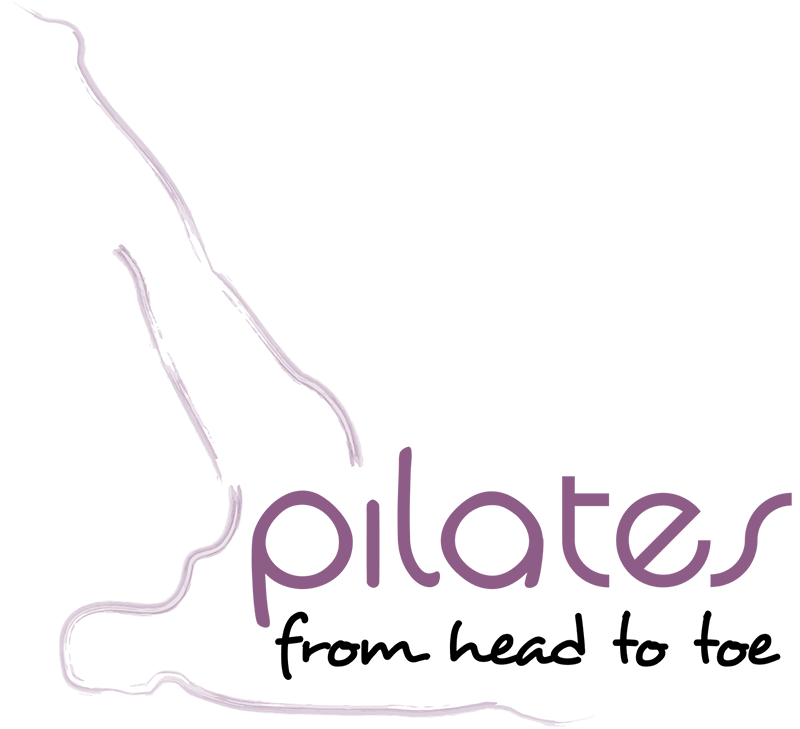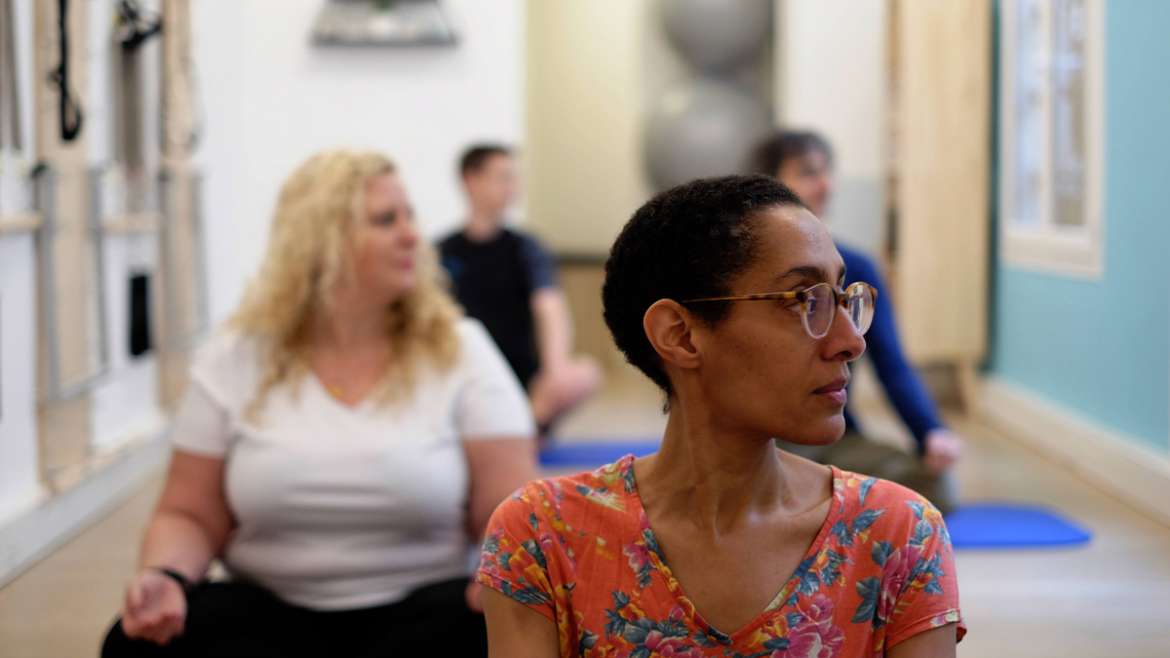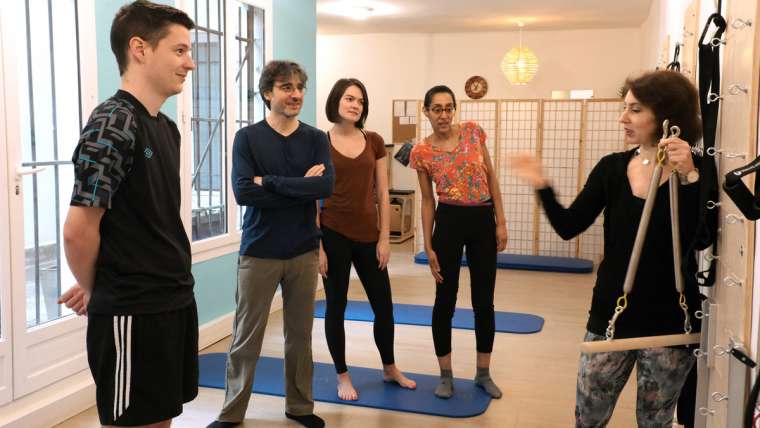At a recent dinner with two friends and their out-of-town guests one from England and one from the US I was asked: who takes Pilates in Paris and why?
Exercise mentalities are vastly different from one country to the next and the reasons people decide to exercise and how they do it are most definitely influenced by society. Pilates in France is happily becoming less under the radar while gaining a (well deserved) reputation of pain reliever. So part of my reply is that a lot of my clients have come to me on a quest to alleviate some form of back or neck pain. Many people also come to Pilates to increase abdominal strength, but there usually is some history of pain that accompanies this desire to strengthen the core.
Entre la position assise devant un écran d’ordinateur ou l’usage d’un téléphone portable et le temps passé à s’occuper des enfants, le cou et les épaules sont des endroits du corps qui souffrent le plus de tensions. Les deux muscles trapèzes, un de chaque côté, commencent à la base du crâne, descendent le long de la colonne vertébrale jusqu’à la 12ème vertèbre thoracique et s’étendent jusqu’aux omoplates. Ce triangle musculaire est surmené car nous le sollicitons plus que nous ne le devrions, ce qui crée des tensions.
Donc, tandis que nous sommes entraînées dans le tourbillon de la rentrée, j’aimerais vous présenter quelques exercices faciles que je recommande à mes clientes comme “devoirs”. Vous pouvez tout simplement les faire debout dans votre salon, au bureau et n’importe où quand vous avez deux minutes à perdre et des tensions à relâcher.
Arm circles
Set up
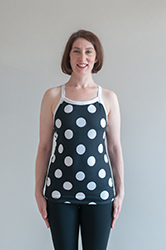
Stand on the floor with feet hip width apart and body weight distributed evenly on both feet.
Direction 1
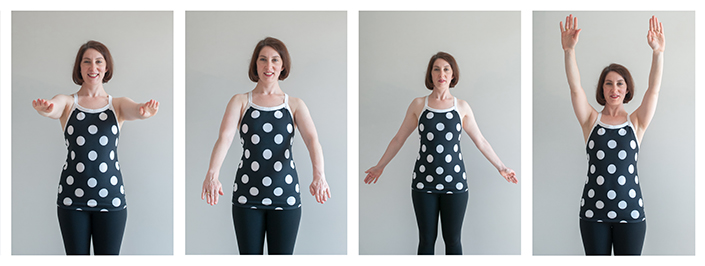
- Lift arms so that hands are level with shoulders.
- Inhale to start lowering both arms downward simultaneously. Exhale to swivel humerus (arm bone) in the shoulder joint to sweep arms up and around. Be sure to keep shoulders released as much as possible while stirring arms in the joints, avoid creating extra tension. les deux bras en même temps.
- Expirer pour faire tourner l’humérus (l’os du bras) à l’articulation de l’épaule et faites des cercles avec vos bras.
Be sure to keep shoulders released as much as possible while stirring arms in the joints, avoid creating extra tension.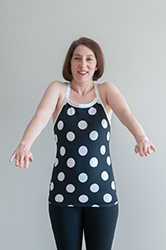
Repeat 5-8 times.
Direction 2
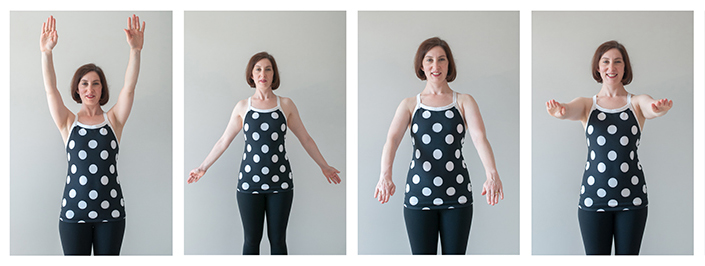
- Lift arms so that hands are level with shoulders.
- Inhale to lift arms up and swivel humerus (arm bone) in the shoulder joint and sweep arms down and around.
- Exhale to rise arms back up so that hands are level with the shoulders.
- Repeat 5 to 8 times.
Remuer simplement l’humérus dans son articulation avec l’épaule dans toutes les directions permet d’assouplir l’articulation et de donner petit à petit de l’ampleur à vos mouvements, mais aussi de faciliter la circulation sanguine. Ainsi, les tensions se relâchent, notamment au niveau des trapèzes.
Next do a few Shoulder Rolls.
Shoulder rolls
Same as the Arm Circles
Direction 1
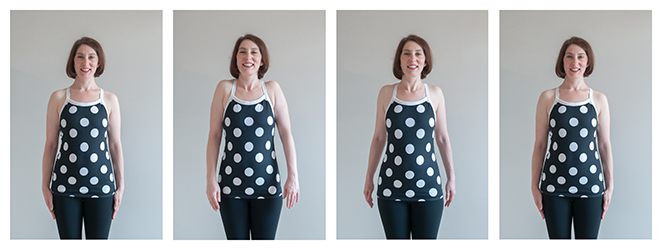
- Looking straight ahead keeping head level inhale in pick shoulders up to the ears.
- Exhale to pull them back then roll them down and forward back to start position.
- Repeat 3 times. Then Reverse.
Direction 2
- Looking straight ahead keeping head level inhale pull shoulders back.
- Expirez pour lever les épaules et faites des petits roulements vers l’avant puis le bas pour ramener à leur position initiale.
- Repeat 3 times.
Ces deux exercices peuvent vous soulager et vous permettre ainsi de vous remettre au travail en souffrant moins. Et même si vous n’avez pas le temps de pratiquer une activité physique régulièrement, tous les jours – ou toutes les semaines –, faire quelques petits exercices simples comme ceux que je viens de vous présenter pourra vous aider sur le long terme et vous évitez de souffrir. Vous pourrez ainsi vous sentir revigorées au cours de la journée en effectuant vos tâches quotidiennes. Si vous souhaitez faire d’autres petits exercices simples en position debout, vous pouvez aussi étirer votre colonne vertébrale : vous trouverez la description des exercices adéquats dans l’article “Stretching Your Spine to Release Tension“.
Photos © Bruno Rizzi
Traduit de l’anglais par Christel Paris.
This article was written for "Message" a non-profit group for English Speaking Parents in Paris and published in its Winter 2015 Magazine.
